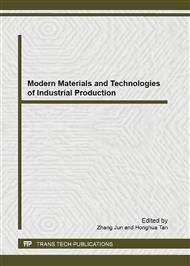[1]
S Haykin. Adaptive Filter Theory. 4th edn. NJ: Prentice-Hall, (2002).
Google Scholar
[2]
B Widrow, SD Stearns. Adaptive Signal Processing. Englewood Cliffs, NJ: Prentice-Hall, (1985).
Google Scholar
[3]
Sock, D.T.M. On the Convergence Behavior of the LMS and the Normalized LMS Algorithms. IEEE Trans. on Signal Processing, 41(9), 2811–2825, (1993).
DOI: 10.1109/78.236504
Google Scholar
[4]
J. Benesty, H. Rey, L.R. Vega, S. Tressens. A nonparametric VSS NLMS algorithm. IEEE Signal Process. Lett, 13(10): 581–584, (2006).
DOI: 10.1109/lsp.2006.876323
Google Scholar
[5]
R. H. Kwong, E.W. Johnston. A variable step size LMS algorithm. IEEE Trans. Signal Process. 40(6): 1633–1642 . (1992).
DOI: 10.1109/78.143435
Google Scholar
[6]
H.J. Butterweck. Iterative analysis of the state-space weight fluctuations in LMS-type adaptive filters. IEEE Trans. on Signal Processing, vol. 47, pp.2558-2561, Sept. (1999).
DOI: 10.1109/78.782205
Google Scholar
[7]
Marcos S, Mcchi O. Tracking capability of the least mean square algorithm: application to an asynchrDn0us echo canceller. IEEE Trans on Acoust Speech,Signal Processing, 35(11): 1570—157, (1987).
DOI: 10.1109/tassp.1987.1165084
Google Scholar
[8]
OW Kwong, ED Johnston. A variable step-size LMS algorithm. IEEE Trans Signal Processing. 40(7), 1633–1642. doi: 10. 110978. 143435, (1992).
DOI: 10.1109/78.143435
Google Scholar
[9]
C. Bao, P. Sas, and H.V. Brussel. Adaptive active control of noise in 3-D reverberant enclosure. J. SoundVibr, Mar. vol. 161, no. 3, pp.501-514, (1993).
DOI: 10.1006/jsvi.1993.1088
Google Scholar
[10]
M. H. Costa, J. Bermudez. A robust variable step size algorithm for LMS adaptive filters. Proc. EEE Int. Conf. Acoust. Speech Signal Process, vol. 3, p.93–96, (2006).
DOI: 10.1109/icassp.2006.1660598
Google Scholar
[11]
Fang Xiao-ming. Analysis and Research on the methods of adaptive noise cancellation in Communication. Anhui University Of Science And Technology . The library of Anhui University of Science And Technology. 39-65. (2009).
Google Scholar


